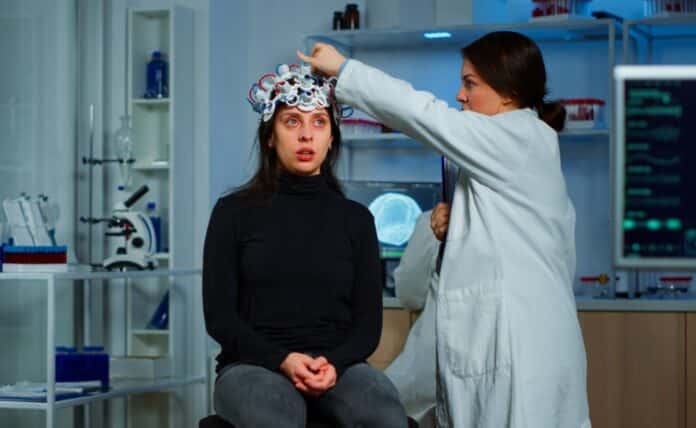Stanford researchers discovered a way to increase hypnotizability temporarily using brief electrical brain stimulation. This may broaden access to hypnosis-based therapy, known for treating various symptoms and disorders, especially pain.
The study, published in Nature Mental Health, shows that just under two minutes of targeted brain stimulation can enhance hypnotizability for about an hour. Lead author Afik Faerman, PhD, emphasizes that while hypnosis is practical, only some benefit equally, and this new method offers potential improvements.
About two-thirds of adults can be hypnotized, with 15% highly hypnotizable. Higher hypnotizability enhances success with hypnosis techniques, according to Dr. David Spiegel, a senior author of the study and a psychiatry professor.
Professor David Spiegel, a leading expert, has spent decades studying and applying hypnotherapy to help patients manage pain, reduce stress, quit smoking, and more. His team, using brain imaging, discovered that highly hypnotizable individuals show more robust connectivity between brain regions related to information processing and decision-making, revealing the neurobiological basis of hypnosis.
Spiegel said, “It made sense that people who naturally coordinate activity between these two regions would be able to concentrate more intently. It’s because you’re coordinating what you focus on with the system that distracts you.”
Professor David Spiegel collaborated with Dr. Nolan Williams to explore whether neurostimulation could modify hypnotizability. In a study involving 80 fibromyalgia patients (excluding highly hypnotizable individuals), half received transcranial magnetic stimulation.
This non-invasive technique delivered electrical pulses to the left dorsolateral prefrontal cortex, a brain region linked to hypnosis. The hope is that neurostimulation could alter even stable traits, providing new avenues for hypnotherapy in chronic pain conditions.
In a groundbreaking trial, Dr. Nolan Williams and the team used participants’ brain networks to target the right spot for neurostimulation. Half of the participants received actual transcranial magnetic stimulation, while the other half received a sham treatment without electrical stimulation.
The actual stimulation group showed a significant increase in hypnotizability, scoring one point higher, lasting for about an hour. This novel approach could change a stable brain trait. The researchers aim to explore different dosages to enhance hypnotizability in future studies further.
Spiegel said, “It’s unusual to be able to change hypnotizability.”
Studies show hypnotizability is a stable trait, like IQ, remaining consistent over time and possibly having a genetic basis. A transient increase in hypnotizability, achieved through neurostimulation, may offer an alternative to long-term opioid use for chronic pain.
Follow-up studies will assess participants’ experiences with hypnotherapy. The findings also suggest broader implications, as neurostimulation could influence other stable traits or improve responses to various forms of psychotherapy, offering non-invasive enhancements for mental health treatments in the future.
Journal reference:
- C Piccione, E R Hilgard, et al., On the degree of stability of measured hypnotizability over a 25-year period. Journal of Personality and Social Psychology. DOI: 10.1037//0022-3514.56.2.289.
